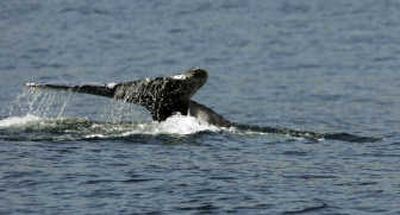Bush exempts Navy sonar from environmental laws

WASHINGTON – The White House has exempted the Navy from complying with two major environmental laws in an effort to free the service from a federal court’s decision limiting the Navy’s use of sonar in training exercises.
Environmentalists who had sued successfully to limit the Navy’s use of loud, mid-frequency sonar – which can be harmful to whales and other marine mammals – said Wednesday that the exemptions were unprecedented and could lead to a larger legal battle over the extent to which the military has to obey environmental laws.
In a court filing Tuesday, government attorneys said President Bush had determined that allowing the use of mid-frequency sonar in ongoing exercises off Southern California was “essential to national security” and of “paramount interest to the United States.”
Based on that, the documents said, Bush issued the order exempting the Navy from provisions of the Coastal Zone Management Act, and the White House Council on Environmental Quality granted a waiver to the National Environmental Protection Act.
The exemptions were immediately challenged by the environmental group that had sued the Navy and by the California Coastal Commission, a state agency that ruled last year that the Navy’s plans to protect marine mammals were too limited and deeply flawed.
Joel Reynolds, attorney for the Natural Resources Defense Council, said the organization would “vigorously” contest the White House orders in court.
Federal District Court Judge Florence-Marie Cooper ruled this month in Los Angeles that the Navy’s plans to limit harm to whales were “grossly inadequate to protect marine mammals from debilitating levels of sonar exposure.”
In her ruling, Cooper banned sonar use within 12 nautical miles of the coast and required numerous procedures to shut it off when marine mammals are spotted.